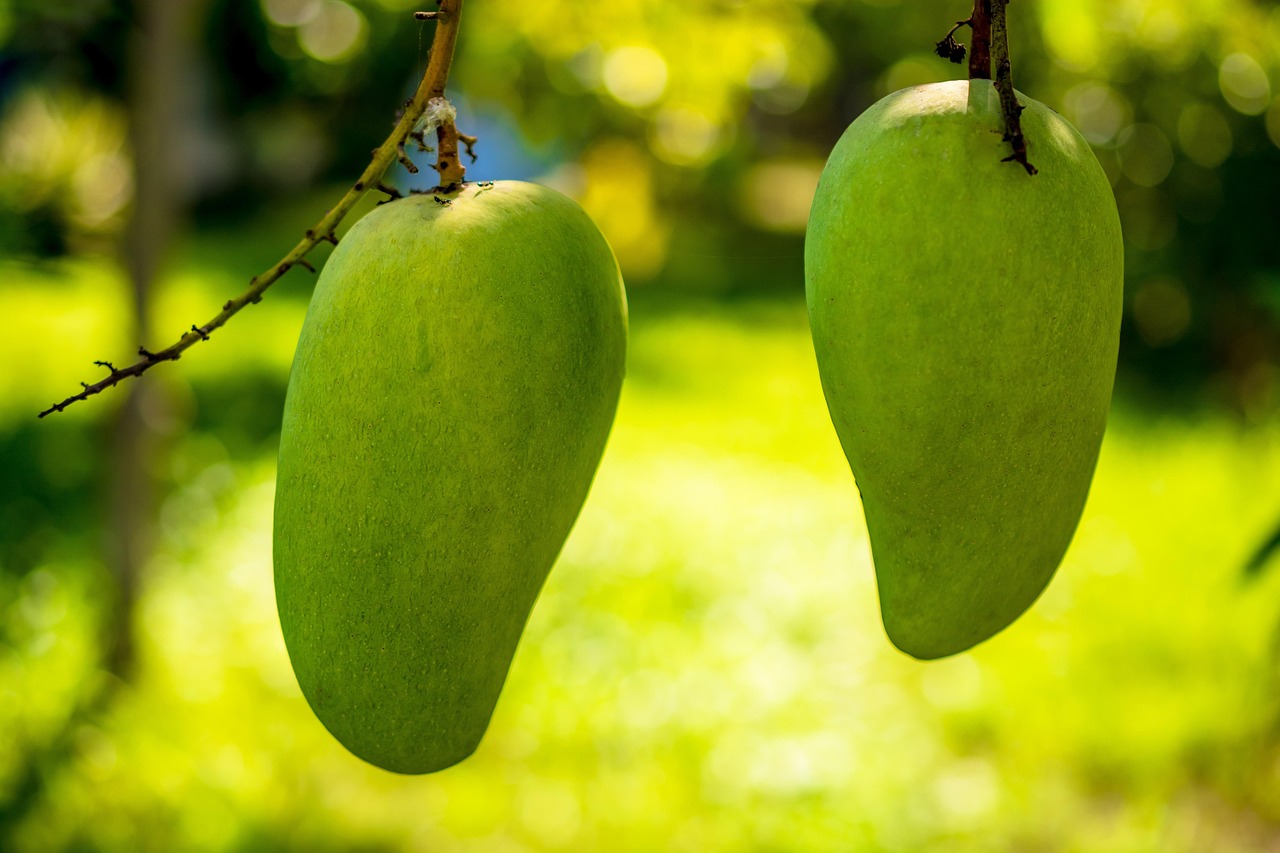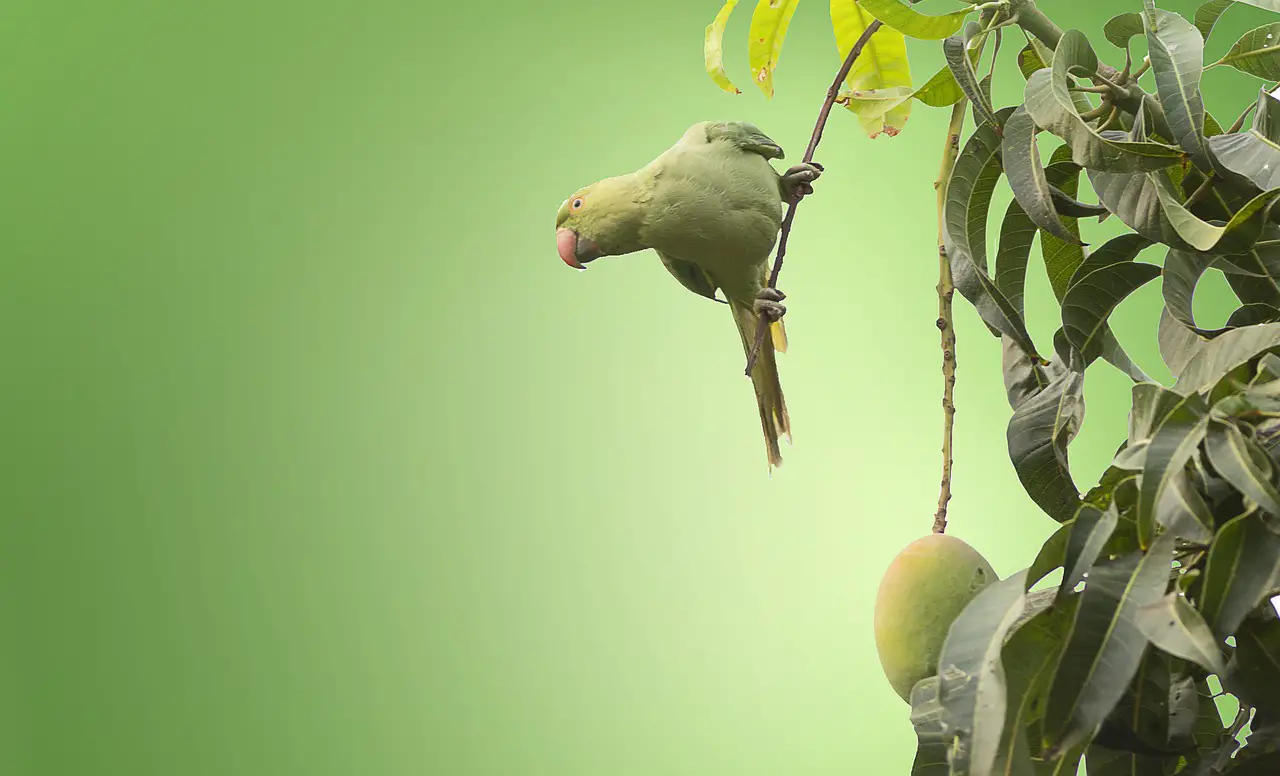Pruning mango trees in small garden spaces is essential for managing size, improving airflow, and boosting fruit yield. Key practices include timing pruning during dormancy, sterilizing tools, and targeted cuts like crown thinning and reduction. Proper technique and post-pruning care ensure healthy, productive trees tailored to limited spaces.
Growing mangoes is a joy—those bright green, fragrant fruits are worth every effort. But in limited space, I always found that managing growth through pruning becomes even more critical. It’s about creating a strong structure (so the branches don’t break under fruit weight) and ensuring enough air and sunlight reach all parts of the tree. Trust me, a little effort now means a bountiful, healthy harvest later.

From my experience, the right timing is everything. I always prefer to prune during the late winter or early spring—not too early when the tree is still resting, but just before it busts out new growth. If you have any broken or diseased branches, I’ve learned to cut those away anytime during the year—clean, precise cuts prevent infections and help the tree recover faster. A quick warning though: never shy away from sterilizing your tools before pruning. I’ve seen infections spread when I forget, and trust me, it’s not worth risking your precious tree.
Why I Always Prioritize Pruning
There are several reasons I always keep pruning in my routine. First, I love how it improves airflow—less humidity around the canopy means fewer fungal problems. Sunlight is another biggie; I’ve noticed that when I clear out the excess branches, the tree turns greener and produces tastier fruit. Plus, it keeps the tree at a manageable size in my small space, saving me from climbing too high or dealing with unruly growth. And let’s not forget, an easier-to-harvest tree makes my life so much simpler!
Pro-Tips for Pruning Success (From My Experience)
– When I first started pruning mango trees, I was tempted to cut back as much as possible to shape the tree quickly, but I learned that gradual pruning prevents stress and encourages steady growth. Always prune in stages if necessary.
– I used to skip sterilizing my tools, thinking it was unnecessary. Now, I always disinfect my pruners, loppers, and saws before each session—this simple step has kept my trees free from infections.
– Early in my experience, I pruned during the wrong season, which stressed the tree and reduced fruit yield. Now, I prune mainly in late winter or early spring, during dormancy, to promote healthy growth.
– I underestimated the importance of proper cuts. I’ve learned to make clean, angled cuts just outside the branch collar, which helps wounds heal faster and reduces disease risk.
– I used to remove too many branches at once, thinking it would benefit the tree. Over time, I realized that over-pruning can weaken the tree. I now focus on minor, targeted cuts to improve structure without overtaxing the tree.
– When I didn’t pay attention to the natural shape of my mango tree, I created awkward or lopsided forms. Giving the tree a gentle guiding hand instead of forcing an unnatural shape has resulted in healthier, more productive trees.
– I initially neglected to remove suckers and water sprouts, which drained energy from the main branches. Now, I regularly remove these to help the tree focus its energy on fruitful growth.
– I used to forget to water and fertilize immediately after pruning, which delayed recovery. Now, I always give my tree a deep watering and some balanced fertilizer post-pruning to support quick healing.
– Early on, I didn’t consider the tree’s existing structure when pruning, leading to weaker branches. Observing and respecting the primary trunk and well-spaced lateral branches has improved both the health and fruiting of my mango trees.
When I Prune and How to Do It
My rule of thumb: do most of your pruning during dormancy. That usually means late winter or early spring. When I prune then, I see healthier growth and better fruiting as the weather warms. I’ve made the mistake of pruning during the summer once—foolish, I know—but it stressed the tree out, and I wound up with fewer fruits. So, I always watch my mango tree’s natural cycle and stick to the dormant season whenever possible.
Whenever I need to remove diseased or damaged branches at any time, I make sure to use sharp, clean cuts. This helps the wound heal fast and prevents disease from taking hold. I’ve also learned to prune gently—removing just enough to improve the structure without overdoing it. Trust me, over-pruning can stress the tree, and I’ve seen my yields drop because of it.
My Favorite Pruning Techniques
I mostly use these methods:
- Crown Thinning: I selectively cut inside branches to let more light and air reach the center. It’s best when branches cross or are too dense—keeps the tree healthy and looking tidy.
- Crown Reduction: To control height, I cut back the tallest branches to a lateral branch or bud, maintaining a balanced shape. Over time, this helps keep my tree small enough for my tiny yard.
- Heading Back: For bushier growth, I trim a branch back to a bud or lateral branch. This encourages new shoots and keeps the tree compact and fruitful.
- Removing Suckers: I always pull out those annoying shoots at the base—these steal energy from the main growth and don’t produce fruit.
Tools I Always Keep Sharp and Ready
I’ve learned through trial and error that good tools make all the difference. I always have:
| Tool | Why I Use It |
|---|---|
| Hand Pruners | Perfect for small twigs and young branches—it’s my go-to for precise cuts. |
| Loppers | For thicker branches that are too tough for pruners—I always keep mine sharp to avoid crushing. |
| Saw | When branches are too big to cut with loppers, I use a pruning saw. Remember to sanitize it after each use to prevent disease spreading. |
| Gloves | Protects my hands from sharp thorns and splinters. |
| Ladder | Reaching the high branches safely is important—I always use a sturdy ladder and double-check it before climbing. |
I always ensure my tools are clean and sharp before starting. Dull blades cause ragged cuts, which slow healing and increase disease risk. It’s a small step that makes a big difference!
Understanding My Tree’s Structure
Realizing how my mango tree grows has helped me prune smarter. It has a main trunk—what I call the “central leader”—and several lateral branches. I always look to keep the central leader intact because it provides the support and shape for the whole tree. The lateral branches grow outward and should be spaced enough to let light reach inside. I’ve also learned that fruiting mostly happens on mature branches, so I avoid over-pruning those that are productive.

Pruning for Small Gardens
In tight spaces like mine, I use specific techniques:
Crown Thinning
I remove crowded or crossing branches to open up the canopy, making sure sunlight hits the inner leaves. It’s like giving my tree a little breath of fresh air.
Crown Reduction
This is how I keep the size manageable: I identify the tallest branches and cut back to a lateral branch or bud, ending up with a nicely shaped, compact tree.
Heading Back
When I want a bushier look or need to control growth, I cut branches back to a bud or side shoot, encouraging dense, productive growth.
Common Mistakes I Always Avoid
- Over-pruning: Removing too much at once stresses the tree. I always prefer gradual shaping over drastic cuts.
- Wrong timing: I avoid pruning during active growth or late in the season—spring dormancy works best for me.
- Poor hygiene: Dirty tools can spread diseases. I make it a habit to sterilize my tools before and after pruning.
- Ignoring natural shape: I respect the natural form of my tree, gently guiding it rather than forcing an unnatural shape.
The Aftercare I Always Do
Post-pruning, I focus on helping my tree recover:
- I make sure to water deeply—no skimping here—and I add compost around the base for nutrients.
- Preventing pests is crucial, so I keep an eye out for signs of insects or disease, treating naturally when needed.
- I avoid heavy traffic around the roots to prevent soil compaction.
Seasonal Tips I Follow
Every season has its role:
- Spring: Perfect for the main pruning, fertilizing to boost new growth, and setting the stage for fruiting.
- Summer: I keep watering consistent and watch for pests—no heavy pruning now as the tree is actively growing.
- Fall: I just do minor maintenance, avoiding heavy cuts.
- Winter: It’s my time for major pruning, giving the tree a good rest before spring.
Signs of Healthy or Unhealthy Branches
I always look for signs that a branch is healthy or in trouble:
- Discoloration or yellowing leaves sometimes mean nutrients are off or disease is setting in.
- If a branch looks limp or wilted, I remove it—better to cut it out early than have it rot away.
- Pests—if I see insects or sticky residue, I treat naturally to avoid bigger problems.
- Fungal spots or mold? I discipline those as soon as I notice them.
- Broken or cracked bark? Usually signs of damage or disease—time for removal.
Different Branch Types and My Pruning Approach
I tailor my pruning based on the branch’s age and condition:
Young Branches
Encouraging lateral growth is my goal. I tip-prune lightly or thin out a couple of small branches to improve light and air flow.
Mature Branches
If they’re overgrown or unproductive, I thin or reduce their length—this often boosts fruiting and keeps the tree balanced.
Damaged or Diseased Branches
I always cut these back to healthy tissue at a 45-degree angle and discard any heavily infected parts.
The Role of Fertilizer & Post-Pruning Care
After pruning, I feed my mango with a balanced fertilizer—organic blends are my favorite. It helps the tree bounce back and promotes vigorous growth. I also make sure to water thoroughly and keep pests in check. Good cultural practices—like proper watering and avoiding soil compaction—make a big difference in recovery and yield.
Wrapping Up
In my experience, pruning mango trees in a small garden isn’t just about snipping branches—it’s about nurturing a healthy, productive, and beautiful tree. Patience, observation, and gentle guiding are my main tools. By understanding your tree’s structure, timing your cuts right, and giving it the care it needs, you’ll be rewarded with a lovely, fruitful mango tree that fits perfectly in your space.
Every mango tree has its own personality, so I always take notes on what works best. Remember, the journey to a thriving mango tree is ongoing. With love, patience, and some good pruning habits, your small garden can become a protected haven bursting with sweet mangoes—truly worth the effort!
